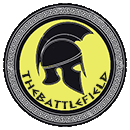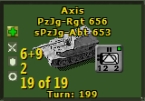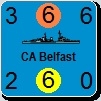AllenK
Posts: 7259
Joined: 2/17/2014
From: England
Status: offline

|
I think the issue is a relationship between the rate of movement, the chance of being surprised (ambushed) and, if surprised, the resulting damage.
At a strategic level, the choice is between a cautious, deliberate advance behind a recon screen in order to avoid casualties or deep, rapid penetration to secure strategic objectives before they can be defended and/or fortified and never mind the cost. In reality there are all sorts of shades of this but it has to be worked into a playable game.
A cautious advance would have a low chance of being surprised and, on average, lower resulting damage if surprised. This should ensure most of the time a cautious advance will stop on contact with the enemy with no substantive losses but sometimes the recon elements will take damage (1 point reduction) and occasionally a recon failure leads to more substantive damage to the main combat elements (2, possibly a maximum of 3 points damage). The penalty is all this recon takes time and the hex movement rate is set accordingly. Perhaps somewhere around a third to half of the maximum. Cautious advance would be a selectable option.
A rapid advance would have maximum movement rate but with higher chances of surprise and, on average, higher resulting damage if surprised. If not surprised, there should be the option to ignore the defence and continue the advance if sufficient movement points remain.
A forced march 'send the tanks hell for leather down that highway and don't stop until you reach Paris' approach would cover double the maximum ground but have the highest chances of surprise and, on average, the highest damage. However, the option to continue the advance would be irrespective of surprise. The fatigue and morale penalties would still apply to forced march.
A guide for maximum/forced movement rates would probably be the daily advance figures the Allies achieved following the El Alamein breakout, Normandy breakouts into Brittany and beyond (USA) and capturing Brussels and Antwerp (UK) or the Germans in the early stages of Barbarossa.
A similar concept could apply to CV units moving at sea. Deliberate movement with smallest chance of surprise and damage and, if not surprised, 360 degree maximum spotting range governed by aircraft ranges and long-range research. Rapid movement with higher chances of surprise and damage and the same spotting ranges but only in the 90 degree arc of advance. Forced movement with double range but highest chance of surprise and resulting damage and minimal spotting if not surprised.
As a new player to SC, it appears some of this is reflected in the maximum spotting range being 2 hexes the first time the unit stops but only 1 hex thereafter. Whether or not the ideas above are worth implementing would depend on whether or not the various percentages can be set so that the broad parameters occur most of the time but exceptions either way are possible.
|
 Printable Version
Printable Version
















 New Messages
New Messages No New Messages
No New Messages Hot Topic w/ New Messages
Hot Topic w/ New Messages Hot Topic w/o New Messages
Hot Topic w/o New Messages Locked w/ New Messages
Locked w/ New Messages Locked w/o New Messages
Locked w/o New Messages Post New Thread
Post New Thread